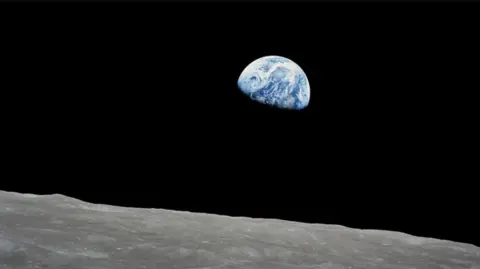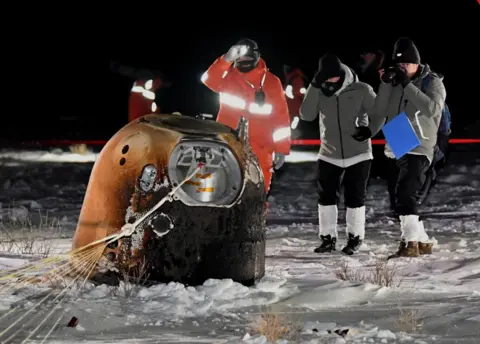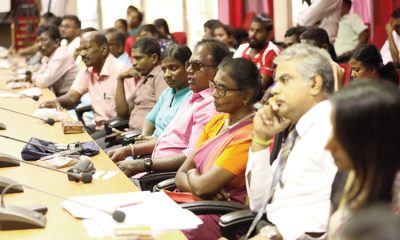Foreign News
German cabinet tries to solve ‘no-debt’ crisis after court outlaws budget

You know it’s a crisis when Germany’s Green vice chancellor cancels attending a climate summit.
Robert Habeck, who’s also economy minister, was supposed to be at the COP28 summit this week in Dubai. Instead, he is in Berlin, wrangling with coalition partners over an emergency agreement for next year’s budget. The crisis exploded on 15 November, when Germany’s constitutional court declared that the government’s budget was illegal for breaking German laws against taking on new debt.
That left a hole of tens of billions of euros.
Now the government has just a few days to come up with a solution, if it wants to pass the 2024 national budget before 1 January without emergency sittings.
On Wednesday (06) Germany’s cabinet meets for the last time this year. A revised budget would have to be put to parliament in next week’s final sessions before Christmas, so ministers should agree this week on how to balance next year’s budget, while sticking to the law.
This is not so much a debt crisis, as an anti-debt crisis. A German law, knowns as the “debt brake“, limits the amount of new borrowing the government is allowed to take on.
The law is enshrined in the constitution since Chancellor Angela Merkel introduced it in 2009 and is a matter of faith for conservatives, who brought the case to the courts.
So it was a coup for the conservative opposition when three weeks ago judges ruled that Olaf Scholz’s left-leaning government was breaking this law.
Balancing Germany’s budget is a feature of German politics, and is known as the schwarze Null, or black zero. It limits a government’s budget deficit to 0.35% of economic output.
Exceptions are allowed in national emergencies, such as the Covid pandemic. The government had planned to use emergency debt left over from the pandemic, to spend on Germany’s shift to green energy instead. Germany’s constitutional court has declared this wheeze illegal.
That leaves an estimated shortfall of €60bn (£51bn; $65bn) for 2023, and €17bn for 2024.
For the current year the government has decided to get round the “debt brake” by declaring 2023 an emergency year, because of the energy crisis sparked by Russia’s invasion of Ukraine, although this may also be challenged in the courts.
But so far, it’s not clear what Mr Scholz is proposing for 2024.
A much-anticipated parliamentary speech by the German chancellor last week did nothing to clarify that. His main message was: Trust me, we have a plan. He also repeated his mantra in German-accented English that “you’ll never walk alone”.

Behind the scenes the three coalition parties have spent the last few days in late-night meetings scrambling to reach an agreement. German commentators can only guess at who is negotiating what, based on which government building has the lights on late at night.
Broadly speaking the only solutions are tax rises, spending cuts or more debt. But these are three very different parties, with conflicting views over borrowing and spending.
The business-friendly small-state liberal FDP, which runs the finance ministry and holds the purse strings, is ideologically opposed to higher taxes and obsessed with keeping the “debt brake”.
Chancellor Scholz’s centre-left SPD meanwhile refuses to roll back a promised increase on social spending, and the Greens are determined to boost investment in Germany’s transition to renewables.
An uncomfortable coalition at the best of times, and these are not the best of times.
Until now the cracks have been papered over by throwing money at causes important for each party.
But all three are doing badly in the polls and have been punished in recent regional elections, making party members unruly and party leaders less open to compromise. The main reason that a compromise looks possible is that poor poll numbers mean there’s no appetite within the government for fresh elections.
Green ambitions to soften the “debt brake” will be difficult to agree in parliament because this needs a two-thirds majority.
Opposition conservatives smell blood, so are in no mood to compromise, and even liberal coalition partners may not agree. But Robert Habeck is rumoured to be planning to get round borrowing rules by arguing for an exemption for crucial future infrastructure.
Either way, the coalition may still find a way to spend money on what’s important to each party, just less of it.
(BBC)
Foreign News
Nasa ‘Earthrise’ astronaut dies at 90 in plane crash

Apollo 8 astronaut Bill Anders, who snapped one of the most famous photographs taken in outer space, has died at the age of 90.
Officials say a small plane he was flying crashed into the water north of Seattle, Washington.
Anders’ son Greg confirmed that his father was flying the small plane, and that his body was recovered on Friday afternoon. “The family is devastated. He was a great pilot. He will be missed,” a statement from the family reads.
Anders – who was a lunar module pilot on the Apollo 8 mission – took the iconic Earthrise photograph, one of the most memorable and inspirational images of Earth from space.
Taken on Christmas Eve during the 1968 mission, the first crewed space flight to leave Earth and reach the Moon, the picture shows the planet rising above the horizon from the barren lunar surface.
Anders later described it as his most significant contribution to the space programme.

The image is widely credited with motivating the global environmental movement and leading to the creation of Earth Day, an annual event to promote activism and awareness of caring for the planet.
Speaking of the moment, Anders said: “We came all this way to explore the Moon, and the most important thing that we discovered was the Earth.”
Officials said on Friday that Anders crashed his plane around 11:40PDT (1940BST).
The US National Transportation Safety Board (NTSB) said the 90-year-old was flying a Beechcraft A A 45 – also known as a T-34. The agency said that the plane crashed about 80ft (25m) from the coast of Jones Island.
Anders also served as the backup pilot to the Apollo 11 mission, the name of the effort that led to the first Moon landing on July 24, 1969.
Following Anders’ retirement from the space programme in 1969, the former astronaut largely worked in the aerospace industry for several decades. He also served as US Ambassador to Norway for a year in the 1970s.
But he is best remembered for the Apollo 8 mission and the iconic photograph he took from space.
“In 1968, during Apollo 8, Bill Anders offered to humanity among the deepest of gifts an astronaut can give. He traveled to the threshold of the Moon and helped all of us see something else: ourselves,” Nasa Administrator Bill Nelson said in a statement.
Mark Kelly, a former astronaut who now serves as a US Senator for the state of Arizona, said in a post on X, formerly Twitter, that Anders “inspired me and generations of astronauts and explorers. My thoughts are with his family and friends”.
[BBC]
Foreign News
China’s Chang’e-6 lifts off from far side of Moon with rock samples

A Chinese spacecraft carrying rock and soil samples from the far side of the Moon has lifted off from the lunar surface to start its journey back to Earth, according to state media.
The achievement on Tuesday is a world first and the latest leap for Beijing’s decades-old space programme, which aims to send a crewed mission to the Moon by 2030.
The Xinhua News Agency, citing the China National Space Administration (CNSA), said that the ascender of the Chang’e-6 probe took off at 7:38am local time on Tuesday (23:38 GMT) and entered a preset orbit around the moon.
It described the move as “an unprecedented feat in human lunar exploration history”.
The Chang’e-6 probe was launched last month and its lander touched down on the far side of the Moon on Sunday. It used a drill and robotic arm to dig up soil on and below the Moon’s surface, according to Xinhua.
After successfully gathering its samples, the Chang’e-6 unfurled China’s national flag for the first time on the far side of the Moon, it said.
The agency cited the CNSA as saying that the spacecraft stowed the samples it had gathered in a container inside the ascender of the probe as planned.
[Aljazeera]
Foreign News
China says its spacecraft lands on Moon’s far side

China says its uncrewed craft has successfully landed on the far side of the Moon – an unexplored place almost no-one tries to go.
The Chang’e 6 touched down in the South Pole-Aitken Basin at 06:23 Beijing time on Sunday morning (22:23 GMT Saturday), the China National Space Administration (CNSA) said.
Launched on 3 May, the mission aims to collect precious rock and soil from this region for the first time in history. The probe could extract some of the Moon’s oldest rocks from a huge crater on its South Pole.
The landing was fraught with risks, because it is very difficult to communicate with spacecraft once they reach the far side of the Moon. China is the only country to have achieved the feat before, landing its Chang’e-4 in 2019.
After launching from Wenchang Space Launch Center, the Chang’e 6 spacecraft had been orbiting the Moon waiting to land. The lander component of the mission then separated from the orbiter to touch down on the side of the Moon that faces permanently away from Earth.
During the descent, an autonomous visual obstacle avoidance system was used to automatically detect obstacles, with a visible light camera selecting a comparatively safe landing area based on the brightness and darkness of the lunar surface, the CNSA was quoted as saying by state-run Xinhua news agency.
The lander hovered about 100m (328ft) above the safe landing area, and used a laser 3D scanner before a slow vertical descent. The operation was supported by the Queqiao-2 relay satellite, the CNSA said.
Chinese state media described the successful landing as an “historic moment”. The state broadcaster said “applause erupted at the Beijing Aerospace Flight Control Center” when the Chang’e landing craft touched down on the Moon early on Sunday morning.
The lander should spend up to three days gathering materials from the surface in an operation the CNSA said would involve “many engineering innovations, high risks and great difficulty”. “Everyone is very excited that we might get a look at these rocks no-one has ever seen before,” explains Professor John Pernet-Fisher, who specialises in lunar geology at the University of Manchester.
He has analysed other lunar rock brought back on the American Apollo mission and previous Chinese missions. But he says the chance to analyse rock from a completely different area of the Moon could answer fundamental questions about how planets form.
Most of the rocks collected so far are volcanic, similar to what we might find in Iceland or Hawaii. But the material on the far side would have a different chemistry . “It would help us answer those really big questions, like how are planets formed, why do crusts form, what is the origin of water in the solar system?” the professor says.
The mission aims to collect about 2kg (4.4lb) of material using a drill and mechanical arm, according to the CNSA.
The South Pole–Aitken basin, an impact crater, is one of the largest known in the solar system.
From there, the probe could gather material that came from deep inside the lunar mantle – the inner core of the Moon – Prof Pernet-Fisher says.
The Moon’s South Pole is the next frontier in lunar missions – countries are keen to understand the region because there is a good chance it has ice.

The capsule in the last Chinese moon mission, Chang’e 5, brought back soil and rocks in 2020 (BBC)
Access to water would significantly boost the chances of successfully establishing a human base on the Moon for scientific research.
If the mission succeeds, the craft will return to Earth with the precious samples on board a special return capsule.
The material will be kept in special conditions to try to keep it as pristine as possible.
Scientists in China will be given the first chance to analyse the rocks, and later researchers around the world will be able to apply for the opportunity too.
This is the second time China has launched a mission to collect samples from the Moon.
In 2020 Chang’e 5 brought back 1.7kg of material from an area called Oceanus Procellarum on the Moon’s near side.
China is planning three more uncrewed missions this decade as it looks for water on the Moon and investigates setting up a permanent base there.
Beijing’s broader strategy aims to see a Chinese astronaut walk on the moon by around 2030.
The US also aims to put astronauts back on the moon, with Nasa aiming to launch its Artemis 3 mission in 2026.
(BBC)
























